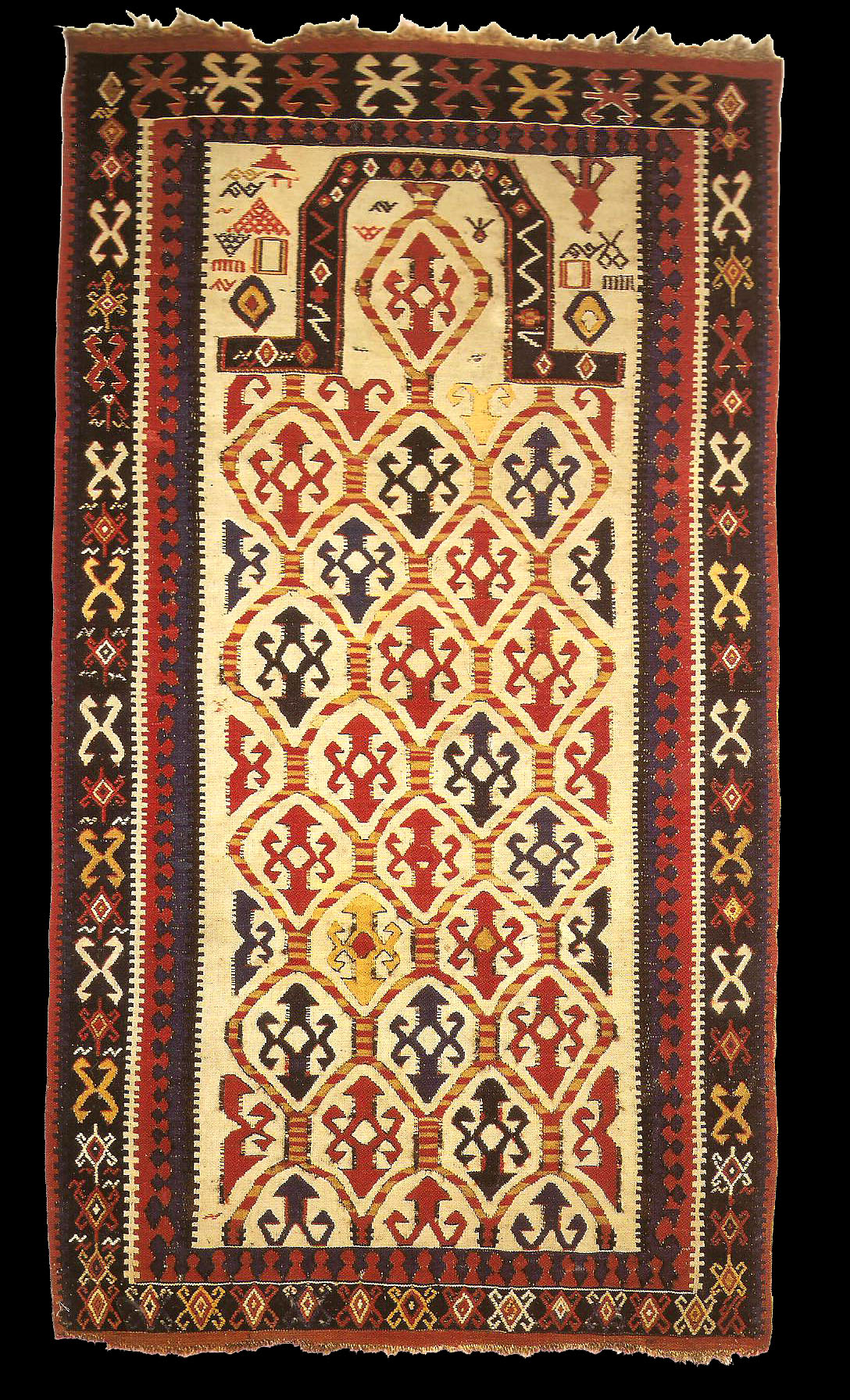|
Antique prayer flatweaves from the Caucasus are extremely rare. A prayer
sumakh from the Arthur D. Jenkins Collection was the first such example to
be published, in 1969,1 and as far as I know only 12 such pieces have been
published to date (four vernehs, two sumakhs and six kilims). This example
was the first of the kilims to appear at auction (at Lefevre in 1977). As
the accompanying catalogue points out, the absence of Caucasian prayer
kilims is intriguing, given the relative abundance of other types of kilims
from the area. This kilim is made from wool using the slit-tapestry
technique on a mixed brown and ivory woollen warp. Some of the small
ornaments in the spandrels and in the borders are embroidered. The boldly
latticed ivory field evokes the lattice prayer rugs from Sbirvan.
The kilim performed well at auction and as so often happens, this brought
other such pieces out of the chests and closets of collectors. On of these
was sold at Edelmann in 1981.
Both rugs are very similar in concept, size, colouring and design, down to
the smallest details. (Eberhart Hermann immediately recognized their
scarcity and acquired both pieces.). A third kilim appeared at auction a
year later.)
 |

